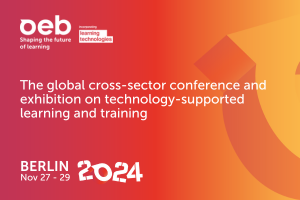Incorporating East African Cultural Markers
 Nairobi (KN), May 2009 - Leonard M. Mengo lectures Software Engineering at JKUAT, the University of Agriculture and Technology in Kenya. He is also undertaking PhD research at the School of Computing and Technology of the University of Sunderland (UK). His talk centers on multimedia learning materials that are especially designed to match the cultural preferences of the Kenyan target users.
Nairobi (KN), May 2009 - Leonard M. Mengo lectures Software Engineering at JKUAT, the University of Agriculture and Technology in Kenya. He is also undertaking PhD research at the School of Computing and Technology of the University of Sunderland (UK). His talk centers on multimedia learning materials that are especially designed to match the cultural preferences of the Kenyan target users.
The presence of familiar cultural markers may result in attracting more individuals who are interested in the material and increasing interest in topics that are not the focus of software developers today. One such topic is leadership styles, which is presented in this prototype. The research seeks to explore the benefits of cultural sensitivity in the development of multimedia learning materials.
This multimedia programme is designed to train individuals interested in leadership about various leadership styles. The content is laid out in a multimedia format containing music, photographic image slideshows, wise words and sayings, and a narration of the material being read. All these are in addition to the learning material and are used to emphasize the theme of the content, depending on the topic being covered. These multimedia elements and the colour scheme used to support the content have been derived from a Kenya perspective.
This was done by using:
- Images familiar to Kenyans such as individuals like Prof. Wangari Maathai, the Maasai people, and Kenyan athletes
- Swahili wise words and sayings, with translation in English
- African music in the background
- A narrator who had a distinctly Kenyan accent
- The colour brown as a theme, which is synonymous with Earth in many traditional African cultures
By using these elements, the multimedia presentation can be said to be culturally sensitive to a Kenyan audience.
The use of these elements in the development of the training material will hopefully provide a good alternative to traditional learning forms such as classroom lessons. By using multimedia, the student is able to absorb more information because of the variety of channels through which the information is received.
The presence of slide shows and music also aids in breaking the monotony of the study and may translate into shorter learning periods and increased incentive to study since the student does not get "bored".
The multimedia materials were designed in such a way as to ensure that the content presented does not compete for the learner's attention but rather complements each section. On the cultural level, this benefits the learner by providing familiarity, and hence aids in retention of the material learned.
By presenting elements that the learner is conversant with, such as the sayings and images, the learners can later refer to the images and associate them with the topics that they have studied.
The use of multimedia can offer a great advantage in training by presenting information within the context of learners' culture. Future training should aim at introducing multimedia, especially for individuals who study by themselves using tutorials or those in distance-learning programs.
There is also a niche for use of these multimedia learning materials in conducting learning that demands explanations of processes. These would help learners be more able to picture the processes, and the inclusion of familiar voices conducting narrations may improve the learners' understanding.
This system has had a positive reception from individuals who have used it, with many appreciating its flexibility as a mode of learning. Some have mentioned enjoyment while going through the multimedia portions as they present the material in a unique manner using images, music, and sayings to support what is being taught.
The strongest points of this multimedia content are:
- Its flexibility, since learners can control how fast they study
- It is interesting because of the variety provided by the many elements, each offering an opportunity to learn
- It is compact, since a lot of material can be covered in a small period of time, which helps to make learning faster
- It is adaptable, since it can be changed to suit another society by incorporating their cultural elements instead of the Kenyan elements currently used.
 2024 neigt sich dem Ende zu und damit starten die Vorbereitungen für das nächste Jahr. Welche Trends werden in 2025 die L&D Branche prägen? Was sind die größten Herausforderungen für Personalentwickler:innen und wie können sie ihnen begegnen? Nehmen Sie sich fünf Minuten Zeit!
2024 neigt sich dem Ende zu und damit starten die Vorbereitungen für das nächste Jahr. Welche Trends werden in 2025 die L&D Branche prägen? Was sind die größten Herausforderungen für Personalentwickler:innen und wie können sie ihnen begegnen? Nehmen Sie sich fünf Minuten Zeit!








